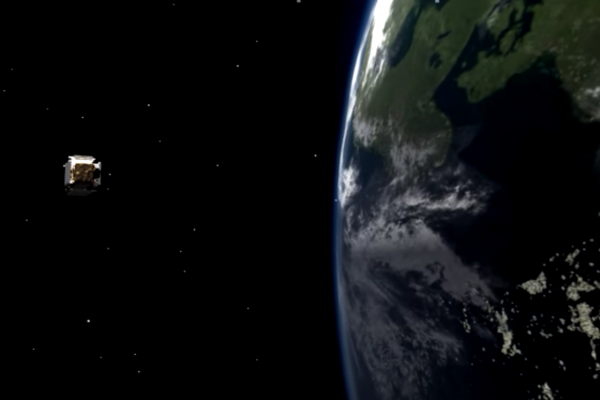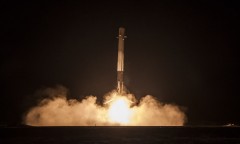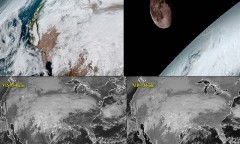By Vishal Goel, | January 25, 2017

An ESA satellite pictured orbiting the Earth. (YouTube)
A European Space Agency satellite is thought to be on a collision course this week with a piece of space debris about 15 centimeters (a half-foot) long, forcing ESA's flight control to plan a rare maneuver.
The piece of debris reportedly belongs to an old Russian satellite called Cosmos-375. It is expected to miss Swarm-B, the ESA's satellite, which measures Earth's magnetic fields, by just over the length of a football field with the margin of 1,000 meters.
Like Us on Facebook
The ESA has been working with the US armed forces' Joint Space Operations Center (JSpOC) and the Vandenberg Air Force Base in California to plan the collision avoidance. The plan is expected to be uploaded to the satellite by Wednesday. If the plan works, the piece of junk will pass 746 meters in front of Swarm-B and 56 meters below it. In a blog update on the situation, ESA's Tim Flohrer said that conducting the planned maneuver would be sufficient to reduce the risk to acceptable levels.
Most of the space debris is made up of pieces of older man-made satellites which are no longer in operation. JSpOC and others track over a half million pieces of space junk as small as a couple of centimeters as they orbit around the planet and sometimes cause problems.
Last year, a particle just a few millimeters long traveling at an orbital velocity of about 25,000 mph was believed to have damaged ESA's Sentinel-1A radar satellite. Also, a piece of Cosmos-375 also threatened to hit the International Space Station back in 2011, but it was luckily self-destroyed in a collision.
Space debris has become a growing concern with Earth's orbit becoming more crowded with satellites with time. However, scientists are working on ways to address the problem, including lasers.
-
Use of Coronavirus Pandemic Drones Raises Privacy Concerns: Drones Spread Fear, Local Officials Say

-
Coronavirus Hampers The Delivery Of Lockheed Martin F-35 Stealth Fighters For 2020

-
Instagram Speeds Up Plans to Add Account Memorialization Feature Due to COVID-19 Deaths

-
NASA: Perseverance Plans to Bring 'Mars Rock' to Earth in 2031

-
600 Dead And 3,000 In The Hospital as Iranians Believed Drinking High-Concentrations of Alcohol Can Cure The Coronavirus

-
600 Dead And 3,000 In The Hospital as Iranians Believed Drinking High-Concentrations of Alcohol Can Cure The Coronavirus

-
COVID-19: Doctors, Nurses Use Virtual Reality to Learn New Skills in Treating Coronavirus Patients











